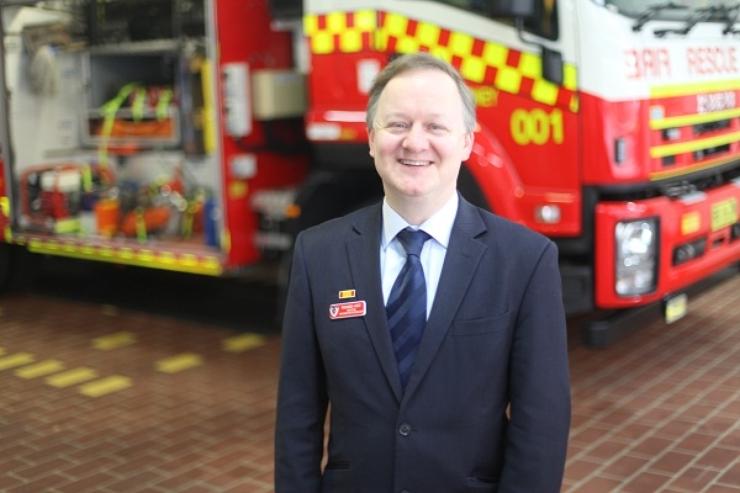
Fire & Rescue NSW's CIO Richard Host
Fire & Rescue NSW (FRNSW) sees a future where its 7,500 staff can access technology services anywhere from any unmanaged, web-connected device, as the organisation re-engineers its back-end systems to support a mobility strategy.
Mobility means the office is now “anywhere and everywhere,” says the organisation’s CIO, Richard Host. “We’re in a hurry to bring mobility to the forefront.”
He said billions of people are already using web-browser services to do business and the organisation can successfully use mobile apps in an enterprise environment.
"We are starting with the premise that we have an unmanaged device with a browser on the internet. My teams are reverse re-engineering our back-end systems, technology and security to make this work. The prize is large,” he said.
This mobility roadmap does not require big-ticket spending, said Host.
“On the contrary, we will save significant money by simply stopping doing things we no longer need to do. Most of our staff just need a smart phone with a laptop/tablet accessory. The laptop/tablet simply needs a browser, anti-virus software and Microsoft Office 365.”
Delivering state-wide mobility
When implemented across FRNSW’s 400 sites next month, staff will be able to use any device to gain seamless access to systems through a WiFi network.
“People want the same seamless experience at work that they have at home.”
“The journey has been a series of progressive revelations”, adds Host. “One of the biggest revelations is that the office is part of anywhere. So if we have a secure, fast and easy solution to connect and work from anywhere on anything over the internet, then we can work the same way when we’re in the office.
“That brings into question the ongoing need for a traditional corporate network – it’s just an expensive redundant service – [we will] get rid of it,” Host said.
Negotiating better telco deals
FRNSW also plans to slash the use of paper, and negotiate better telco deals for network traffic.
Read more: Fire & Rescue NSW to deploy “fire-fighter proof” tablets
“As we move progressively to cloud services from many providers, it makes no sense to drag all your internet traffic back to the centre to then put it out to the internet through a relatively small expensive pipe,” noted Host.
“If our 400 sites can access the internet directly and simultaneously, then we will have over 3.5Gbit/s of effective bandwidth for less than half the cost of the current private network.”
Because internet services can be purchased from different providers, there is significant price competition and often faster services.
“You can simply choose the fastest and least expensive option at each location,” he said.
In regional areas, a 2Mbit/s connection is costing $1600 per month. When connected to a regular internet connection, this traffic would be at least ten times faster and one tenth the cost.
“We are talking about significant improvements in performance and a serious reduction in cost. The irony is that since many devices have their own independent internet connection, there is a higher level of resilience using the internet than we had with our private corporate network,” said Host.
Telco cost savings will be re-assigned to improving frontline systems that support the firefighters.
“Reducing the cost of running the corporate environment cuts the tether that’s been holding us back,” says Host.
“We can leverage the same 21st century tools and ways of connecting that people already use and enjoy at home, and share in the benefits.”
He adds that organisations need to stop trying to manage end-user devices.
“Many IT departments are in world of pain trying to keep a tight control on things that cannot and should not be controlled. Rather, we should embrace IT consumerisation to make work just as mobile and seamless as what we already do at home, and on the road.”
Managing cloud and data centre integration
In other moves, FRNSW is migrating corporate and administration systems to the NSW Government-hosted Metronode data centre.
This change from self-owned and managed infrastructure to a platform-as-a-service model means the organisation can retire servers and storage at its two data centres.
Services will go live in the new Metronode data centre later this year, supporting the operations of five agencies with systems supporting 100,000 staff and volunteers.
"FRNSW is embracing “as-a-service” delivery models. We need to leverage the scale efficiencies and expertise that the private sector can offer. These services also offer improved quality, cost-control, support, reliability and security," said Host.
Read more: NextDC's 'pivotal year'
Join the CIO Australia group on LinkedIn. The group is open to CIOs, IT Directors, COOs, CTOs and senior IT managers.
